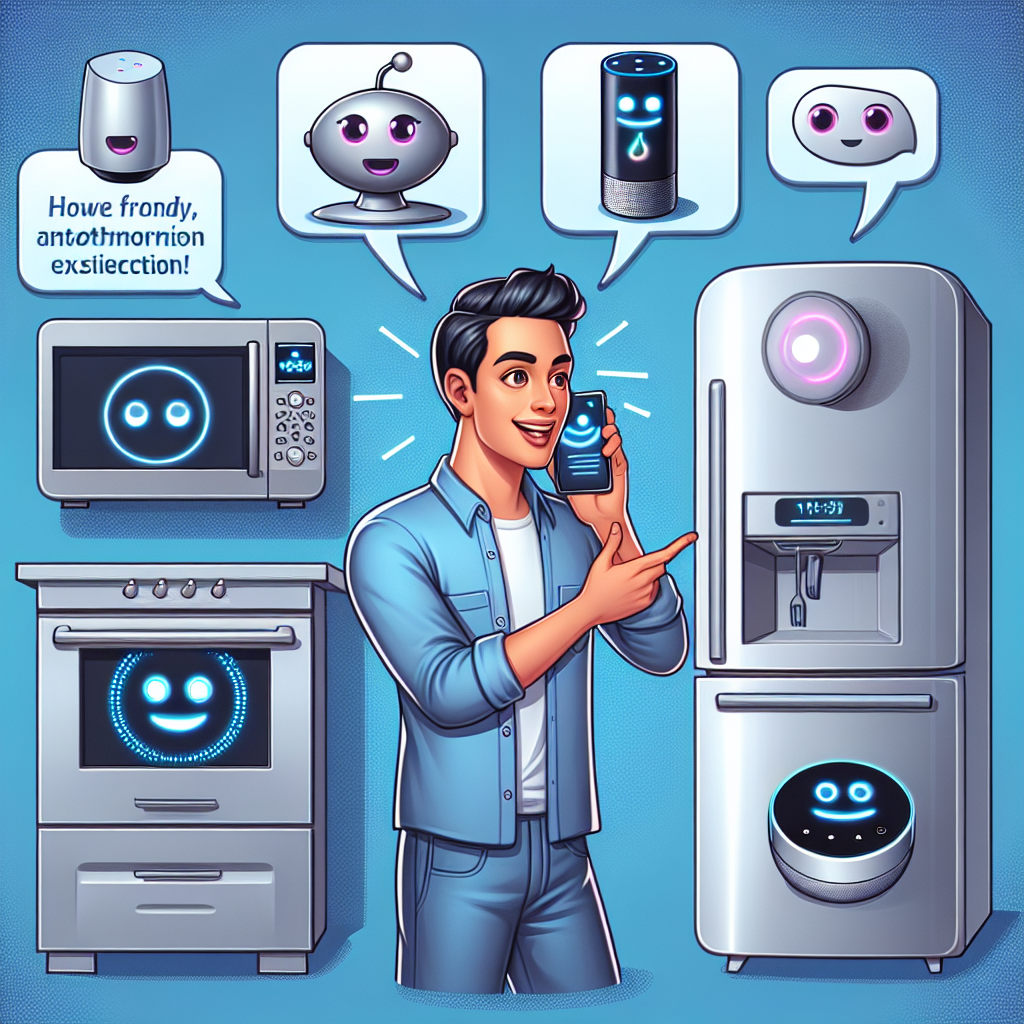Remember the last time you tried to use a new software application? The clunky commands, confusing menus, and that frustrating feeling that you’re speaking an entirely different language than your computer? Those days are rapidly becoming a thing of the past, thanks to the rise of conversational AI in SaaS platforms.
Conversational AI is revolutionizing how we interact with software, transforming rigid, command-based interfaces into natural, friendly conversations. For individual entrepreneurs, small businesses, and developers who don’t have time to climb steep learning curves, this shift represents nothing short of a technological breakthrough.
“The future of software isn’t about learning how to talk to machines—it’s about machines learning how to talk to us,” says a tech industry expert who’s witnessed the evolution of user interfaces over the past decade.
Making Software Feel Human
Today’s AI SaaS Creation Platforms are designed with conversation at their core. Instead of forcing users to adapt to the software’s language, these platforms adapt to yours. Imagine telling your inventory management system, “Hey, I need to know which products are running low this month,” and getting an immediate, helpful response—no complex query building required.
For the solo entrepreneur juggling multiple roles or the small business owner with limited IT resources, this conversational approach removes significant barriers to technology adoption. You no longer need to be a technical expert to leverage powerful software solutions. The software meets you where you are, speaking your language and understanding your needs.
This shift toward more natural interactions isn’t just about convenience—it fundamentally changes our relationship with technology. When you can talk to your software like a friend, you’re more likely to use it regularly, explore its capabilities, and integrate it deeply into your workflows.
Key Features That Make AI Feel Like a Helpful Friend
What exactly makes conversational AI in SaaS platforms feel more human? Several key features work together to create this friendly, intuitive experience:
AI Chatbots That Actually Understand You
Unlike the frustrating chatbots of yesteryear that followed rigid scripts, today’s AI-powered customer support interfaces use natural language processing to truly understand what you’re asking. They can handle complex queries, remember context from earlier in the conversation, and provide genuinely helpful responses.
For example, a user-friendly AI tool might allow you to ask, “How did our sales compare to last quarter?” and receive not just raw numbers but meaningful insights presented in everyday language.
Interfaces That Require Zero Technical Expertise
Modern AI SaaS platforms are designed with non-technical users in mind. They feature conversational interfaces that guide users through complex processes using simple, everyday language. This democratization of technology means that powerful workflow automation tools are now accessible to everyone, regardless of their technical background.
“The most powerful technology is the kind you don’t have to think about using,” notes a small business owner who recently implemented an AI SaaS platform. “When I can just talk to my software the way I’d talk to a colleague, everything becomes so much more efficient.”
Continuous Learning and Adaptation
What makes these AI systems truly revolutionary is their ability to learn from each interaction. The more you use them, the better they understand your specific needs, preferences, and communication style. This creates a virtuous cycle where the software becomes increasingly personalized and valuable over time.
The Power of Customizable Digital Workers
One of the most exciting developments in AI SaaS Creation Platforms is the emergence of customizable AI digital workers. These are not just chatbots but comprehensive virtual team members that can be tailored to handle specific tasks and workflows within your organization.
For the individual entrepreneur, these digital workers can serve as virtual assistants, handling everything from calendar management to customer inquiries. Small teams can deploy them to automate routine tasks, freeing human team members to focus on creative and strategic work. Developers can customize these digital workers to integrate with existing systems, creating seamless workflows across platforms.
The beauty of these digital workers is their flexibility. You can create them for personal use, tailoring them to your unique needs and preferences. But the potential extends far beyond personal productivity. The most innovative AI SaaS platforms are creating open marketplaces where users can share and sell their AI products, opening up new commercial opportunities for entrepreneurs and developers.
This ability to create, customize, and potentially monetize AI applications represents a significant shift in how we think about software development. No longer is it the exclusive domain of specialized programmers—it’s becoming accessible to anyone with a good idea and the right platform.
Low-Code Platforms: Democratizing AI Development
At the heart of this revolution are low-code platforms that make AI development accessible to non-technical users. These platforms provide intuitive, visual interfaces that allow users to create sophisticated AI applications without writing a single line of code.
For small businesses and startups with limited development resources, low-code platforms offer a way to compete with larger organizations by quickly deploying AI-powered solutions. Individual entrepreneurs can use these platforms to automate routine tasks, freeing up valuable time for strategic thinking and business growth.
“Low-code platforms have completely changed our approach to innovation,” explains a small business owner. “Before, we had ideas but couldn’t implement them without hiring expensive developers. Now, we can quickly test new concepts and bring them to market ourselves.”
The democratizing effect of these platforms extends to diverse industries and use cases:
- A real estate agent creates a personalized property recommendation system for clients
- A healthcare provider develops a patient appointment scheduling assistant
- A retail shop owner builds an inventory management system with predictive ordering
In each case, the barrier to entry isn’t technical expertise but simply having a clear vision of what you want to accomplish. The low-code platform handles the complex technical implementation, allowing users to focus on solving real business problems.
Intelligent Collaboration: Working With AI, Not Just Using It
As conversational AI in SaaS platforms becomes more sophisticated, we’re moving beyond simple automation toward true intelligent collaboration. This represents a fundamental shift in how we think about the relationship between humans and technology.
In this new paradigm, AI systems don’t just execute commands—they proactively suggest solutions, identify potential issues, and continuously learn from their interactions with human team members. This collaborative approach leverages the unique strengths of both humans and AI: human creativity and judgment combined with AI’s ability to process vast amounts of data and identify patterns.
For developers and technical professionals, this means being able to focus on innovative problem-solving rather than routine coding tasks. The AI becomes a partner in the development process, suggesting optimizations and handling repetitive elements of the workflow.
Small businesses benefit from having access to capabilities that would otherwise require a much larger team. A marketing department of one, for example, can leverage AI assistants to analyze campaign performance, generate content ideas, and even draft social media posts—all through natural conversation rather than complex interfaces.
The Future: Fully Automated Workflows
The ultimate goal of conversational AI in SaaS platforms is to achieve fully automated workflows that require minimal human intervention. Zygote.AI is leading this charge with workflows that already autonomously select topics, write content, generate illustrations, perform reviews, and publish promotional articles—all with little to no human input required.
Imagine a future where your marketing team simply sets parameters and goals, and your AI SaaS platform handles everything from content creation to campaign analysis. Or where your customer service operation functions seamlessly 24/7, with AI handling routine inquiries and only escalating the most complex issues to human team members.
This vision isn’t about replacing human workers—it’s about elevating human work to focus on what people do best: creative thinking, emotional intelligence, and strategic decision-making. By automating the routine, we free ourselves to focus on the exceptional.
Embracing the Conversational Future
As we look toward the future of AI SaaS Creation Platforms, it’s clear that conversational interfaces will continue to evolve and become even more intuitive and powerful. The gap between how we naturally communicate and how we interact with technology will continue to narrow until using software feels as natural as having a conversation with a knowledgeable colleague.
Zygote.AI is at the forefront of this transformation, building a platform that makes AI creation accessible to everyone. By enabling individuals and teams to create intelligent and efficient AI applications without coding skills, they’re fostering innovation and unlocking endless possibilities for businesses of all sizes.
The days of talking to software like it’s a robot are behind us. In this new era of conversational AI, we can finally talk to our software like we’d talk to a friend—in our own words, with our own style, and with the expectation of being truly understood.
For individual entrepreneurs, small businesses, and developers alike, this shift represents an unprecedented opportunity to leverage powerful technology without technical barriers. It’s not just about making software easier to use—it’s about fundamentally changing our relationship with technology to create a smarter, more efficient world where everyone can realize their potential.









